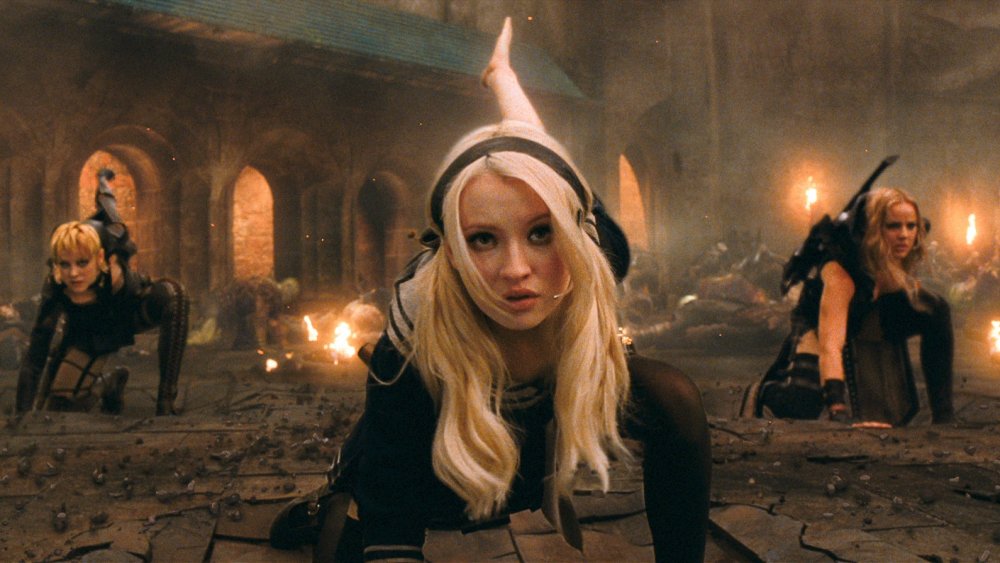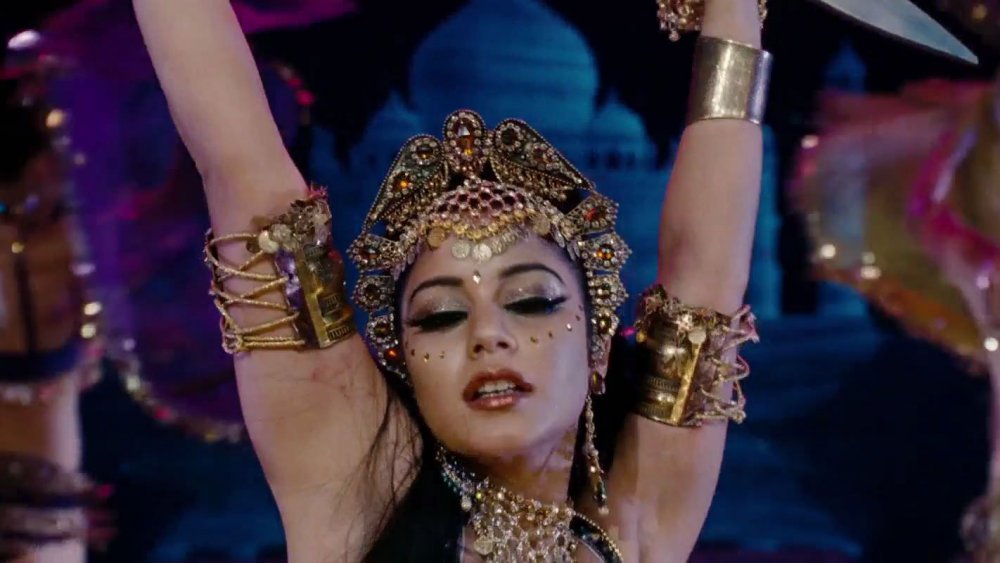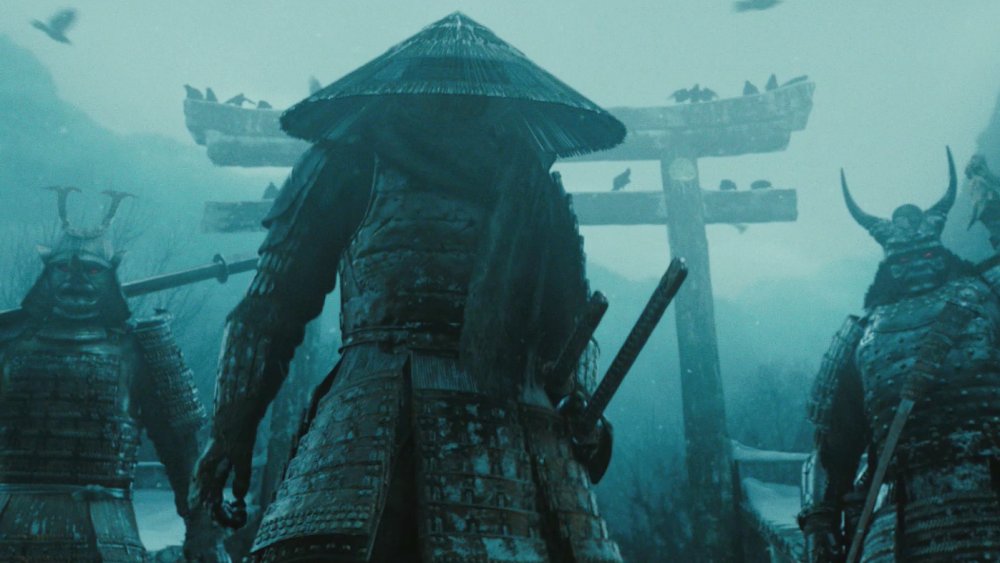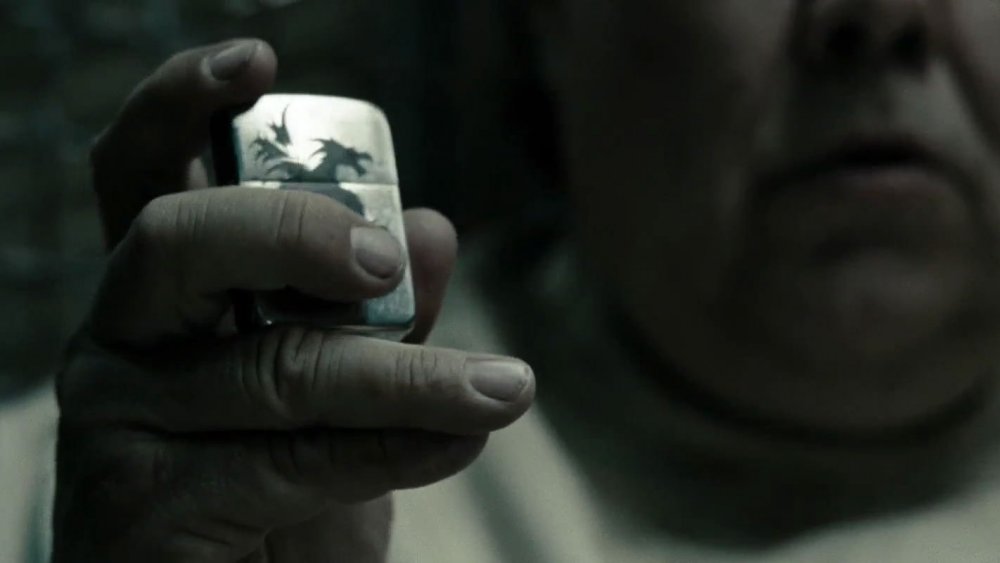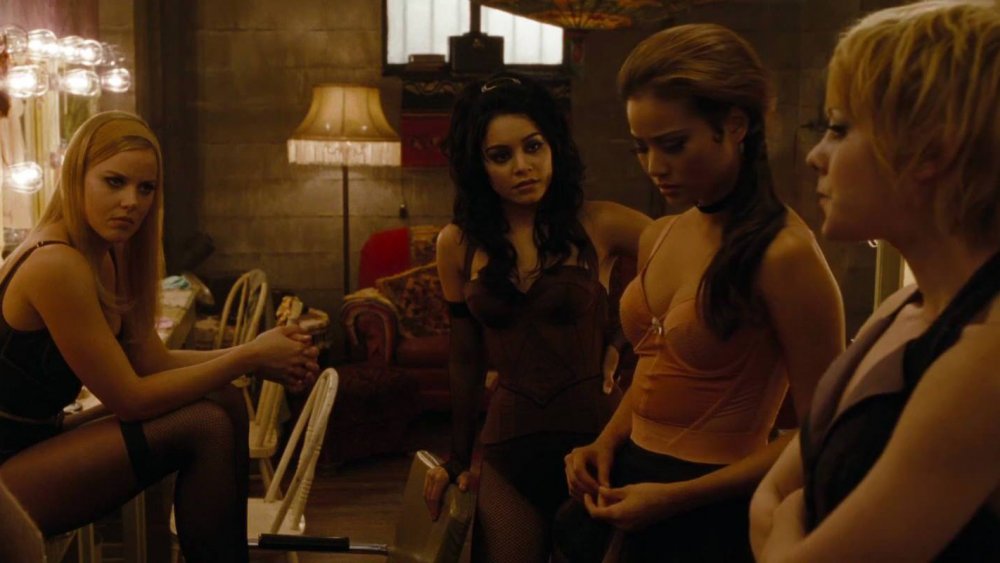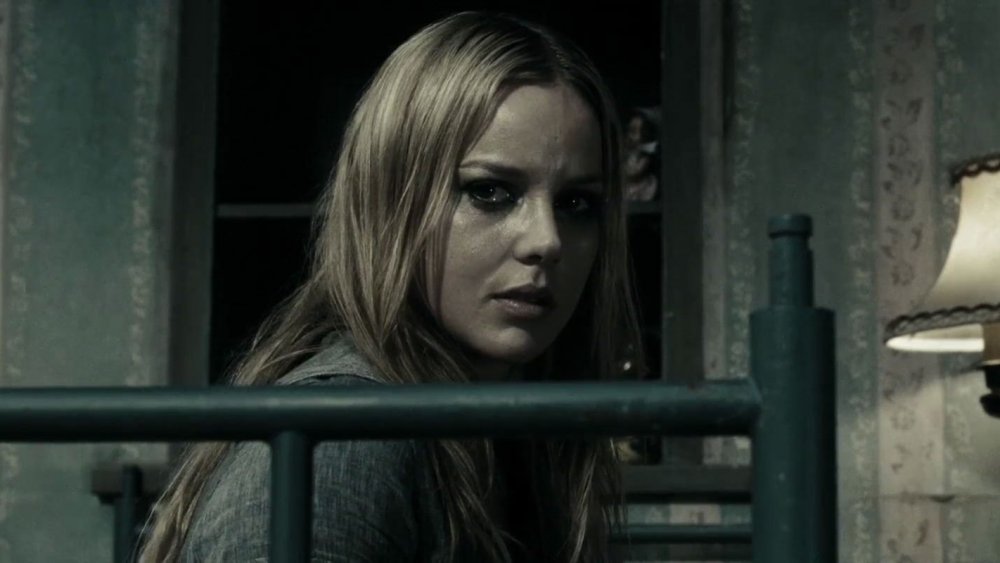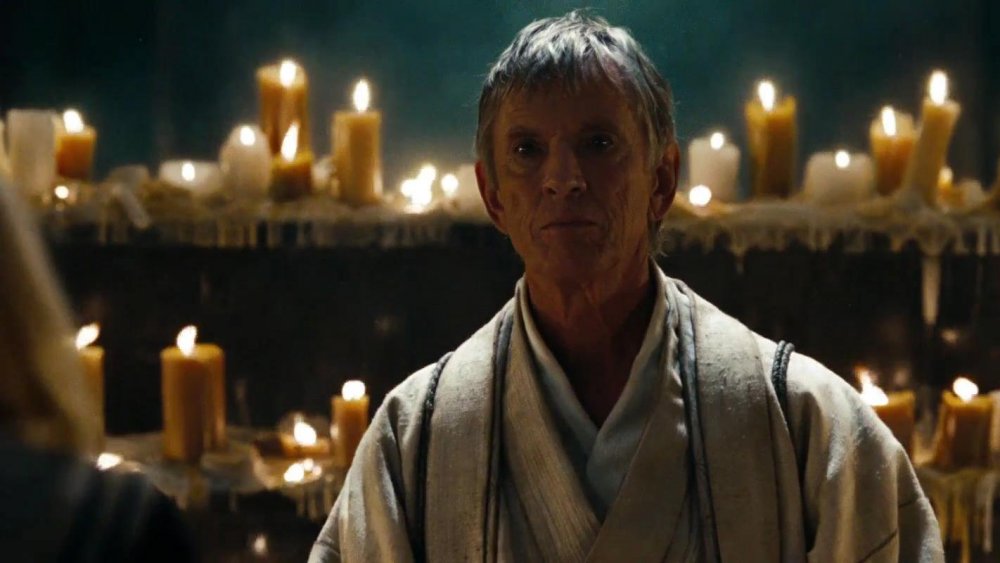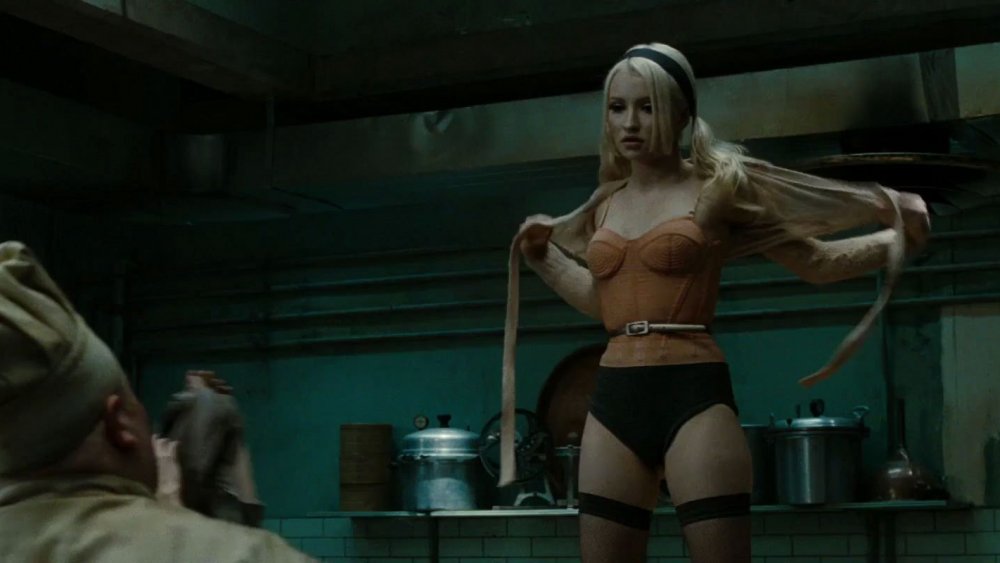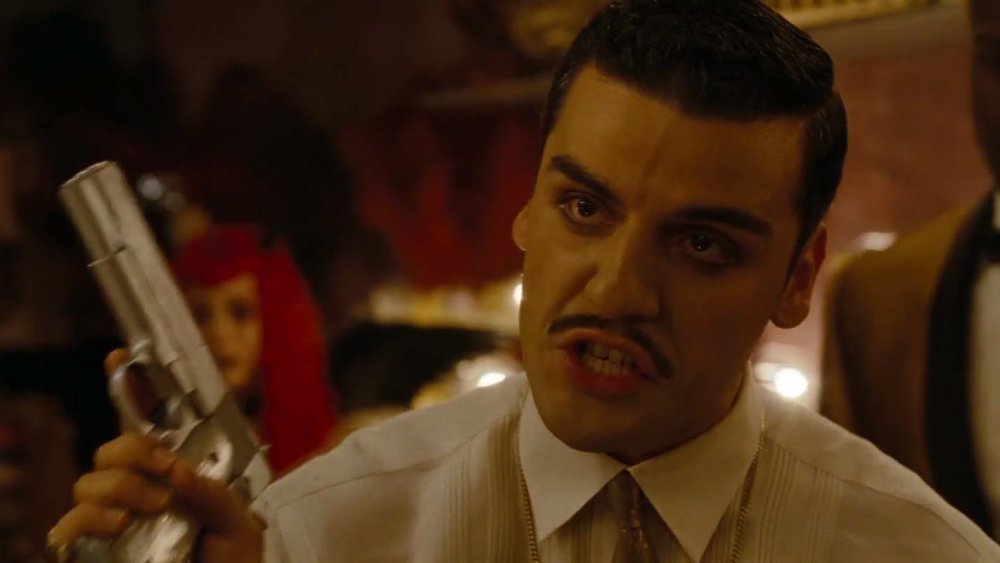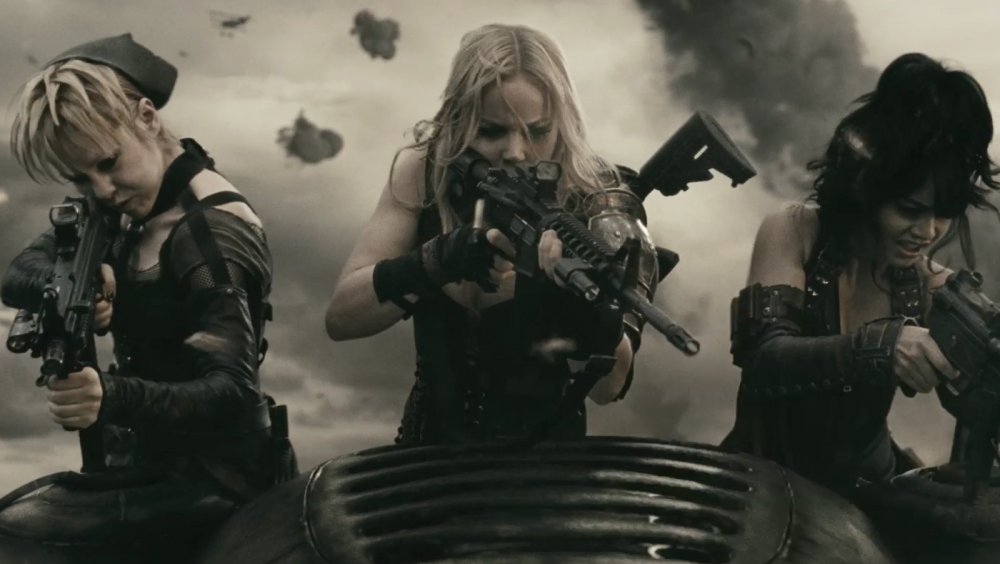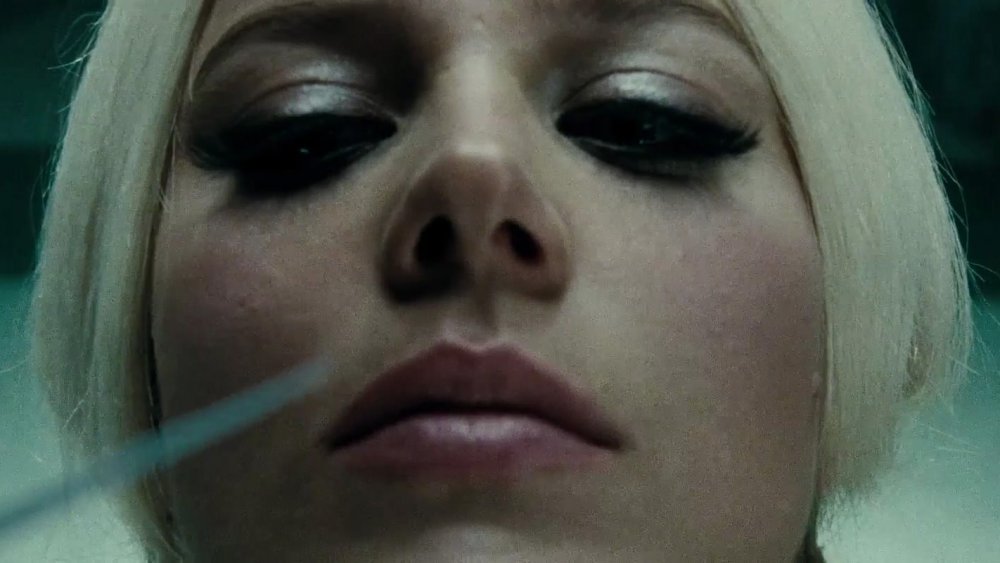Things We Still Don't Understand About Sucker Punch
Though nearly a decade has passed since its initial release, there's still a tremendous amount that we don't understand about Zack Snyder's mind-bending action thriller Sucker Punch. Our questions are many and varied. There are some plot elements that we feel as though we still don't understand at a fairly basic level, but even more importantly, we truly don't know how to feel about this deeply flawed film. Put simply, the movie has problems. It's currently rocking a 22% on Rotten Tomatoes, and we fully understand why that is. It's certainly an ambitious film, but it also fails to meet most of the lofty goals it sets for itself, often in a spectacularly painful fashion.
The plot is as follows. After accidentally killing her sister while trying to protect her from their abusive stepfather, a girl only known as "Babydoll" ends up in a mental asylum, where she's at the mercy of a corrupt and abusive orderly named Blue. With just five days remaining until Babydoll is lobotomized, she allies with five other inmates to plot an escape. As they work towards escaping physically, they also learn to escape their bondage mentally, through imagining fantastical worlds in which they're powerful heroes going on a grand adventure.
To sort through our many conflicting feelings about this undercooked mess of a movie, we're giving Sucker Punch a second look. Hopefully by the end of the article, you'll be able to decide for yourself whether or not it was worth it.
Why does Babydoll fantasize about a brothel in Sucker Punch?
Sucker Punch operates on three levels of reality. The first is the "real world," the corrupt mental asylum where Babydoll is being abused by the staff. The second level is the brothel. Babydoll imagines that the asylum is, in fact, a nightclub and brothel run by an abusive mobster, where she and her fellow patients are the club's dancers and also sex slaves. The third level of reality is Babydoll's totally fantastical action killing sprees, which are set to modern pop music.
We understand the asylum. That's the real world. We also basically understand the fantasy sequences. Babydoll imagines a world in which she's powerful because in the real world, she's not. But it's that second layer of reality, the brothel, that has us confused. It certainly isn't functioning as escapism for Babydoll. The imaginary brothel is no less hostile than the asylum, just slightly different. Stepping outside in-universe justifications and instead speculating on the reason the writers chose to include it, we're also drawing a blank. We can't really think of a deeper thematic or artistic motivation behind its inclusion, apart from being an excuse to put all the female characters in lingerie.
Unless we're missing something, we can't figure out what the film would lose if it cut out the brothel and only had two levels of reality instead of three. The tone would be the same, the trauma would be the same. All that would change are the costumes and color palette.
Why does Babydoll understand modern film tropes?
Each time Babydoll dances in the nightclub reality, she's temporarily transported to a different fantastical world, full of monsters that she must slay, such as giant samurai, steampunk zombies, and killer robots. The implication is that these are Babydoll's dreams, but why would a young person from the 1950s be dreaming in the tropes of modern geek culture? If Sucker Punch is intended as a critique of the sexism of geekdom, the inclusion of this imagery makes sense on a thematic meta-textual level, but within the logic of the film, it's totally nonsensical.
There's a version of this that could've worked. In movies, generally a character's dreams are a reflection, in some way, of who that person is. Zack Snyder has stated (via MTV) that the comic book magazine Heavy Metal was a major inspiration for Sucker Punch, so perhaps Babydoll herself could also have been established as a comic book fan. She could be an aspiring writer or artist who was a couple decades ahead of her time, dreaming of fictional worlds that didn't exist yet. Then again, that would've required giving Babydoll a personality, which the film is thoroughly uninterested in.
Perhaps this is a bit harsh, but at times, it seems the filmmakers treat Babydoll much the same way her captors do, simply as a means to an end to fulfill their desires. She isn't really a person, her inner life doesn't matter, and these sequences are rather transparently just the writer's fantasies and not hers.
How closely are the fantasy sequences supposed to mimic reality?
Whenever Babydoll and friends are fighting monsters in a fantasy sequence, they're also dealing with a problem in the nightclub reality. However, most of the time, the actions they're performing within a fantasy seem to have little to do with the corresponding goals they're trying to achieve outside it. How are we supposed to interpret this? Do the specifics of these fantasies actually matter, or are they just supposed to look cool?
For instance, in one sequence, Babydoll is distracting a man by dancing while another girl, Amber, steals a lighter from his jacket. In the fantasy, however, Amber is the one performing a distraction, fighting a mother dragon so that Babydoll can slay a baby dragon and retrieve a pair of magic crystals from its throat. The action is a complete inversion of what's happening in the nightclub level of reality for no apparent reason, and it makes it difficult to get emotionally invested in the stakes of the dragon-slaying scene.
One notable exception to this usual lack of cohesion occurs when the girls are trying to steal a kitchen knife. When the girls fail and Rocket gets stabbed by the cook in the nightclub reality, we then cut back to the fantasy world, where Rocket heroically sacrifices herself to save her friends. It's one of the stronger moments in the film, primarily because the specifics of the fantasy sequences now actually mean something. It's just a shame it didn't happen more often.
What are the ultimate fates of Blondie, Amber, and Rocket?
After the girls' plan to escape fails, things don't end well for them. Rocket is killed by the cook, and Blondie and Amber are executed by Blue. In the end, only Sweet Pea escapes. But remember that all of this is only happening in an imaginary world (the brothel) and not in the real world (the asylum). We do get a few brief scenes in the asylum after this, but Rocket, Amber, and Blondie are nowhere to be seen. Were they actually killed? If you die in the brothel, do you die in real life?
The only hints that we get come when Dr. Gorski offers an account of Babydoll's ill-fated escape attempt, saying that she "stabbed an orderly, started a fire, and helped another patient to escape." She doesn't say that the orderly in question, Blue, openly executed two other patients in front of her. Additionally, given that Blue is eventually arrested for a transgression as minor as forging Gorski's signature, you'd imagine that openly murdering patients wouldn't at all fly in this workplace. Well, it makes sense if Blue is a powerful and violent mobster, and Gorski is working for him. It doesn't at all make sense if he's a mere orderly, and she's a doctor who presumably outranks him. However things went down in the real version of Babydoll's escape, it was probably quite different, and whether or not Rocket, Blondie, and Amber died in real life, we'll never know.
Who is the point-of-view character in Sucker Punch, and why does it matter?
A popular fan theory about Sucker Punch is that Babydoll isn't actually the true point-of-view character. In truth, the entire story is being told in past tense by the one girl who escaped, Sweet Pea. Some take this theory even further, asserting that Babydoll herself never existed, and she's an alternate persona that Sweet Pea invented for herself — a flawless, badass superhero that Sweet Pea pretended to be so that she could be strong enough to escape.
Although we've seen a good deal of discussion about the fact that this potential interpretation exists, we've yet to see anyone speculate about why it matters or what it might mean thematically. The best theory we currently have comes from the idea that Sucker Punch is intended to be a movie about geeky media, specifically trashy superhero comics and B-movies that are built around power fantasies. You might say that Sucker Punch argues that these sorts of stories are worth celebrating, despite their trashiness, because they present heroes who, despite being fictional, can inspire real people to become better versions of ourselves.
So possibly, Sweet Pea invented the character of Babydoll because even if she couldn't personally imagine slaying the dragons in her own life, she could imagine another person, a hero, who could. Lie to yourself if you must, tell yourself that you're a hero, and there's no obstacle you can't overcome. Or to put it another way, "You have all the weapons you need, now fight."
What's up with the Wise Man?
There's little in Sucker Punch that's as confusing as the mysterious Wise Man who appears in Babydoll's fantasy battle sequences. This enigmatic figure typically offers the girls advice in the form of trite bumper sticker truisms such as "if you don't stand for something, you'll fall for anything" or "don't ever write a check with your mouth you can't cash with your ass." Even more puzzling, these words of wisdom consistently have no discernible relevance to the girls' current situation, nor do they relate to the film's deeper themes. So what's the deal with this character? Why is he here?
We get an answer, sort of, in the final scene. As Sweet Pea is boarding the bus that will take her to freedom, some police officers start hassling her, suspecting that she's an escaped mental patient. Fortunately, the bus driver steps in and convinces them to scram. This character is played by Scott Glen, who also played the Wise Man. One potential interpretation is that if Sweet Pea has been the protagonist all along, if the fantasies are really hers, perhaps she chose to retroactively cast this man who saved her as a mentor figure throughout the entire story. If so, we can't help but wonder why she wouldn't cast Gorski in that role instead, as she was actually helping the girls survive the entire time and not just at the last minute. The theory also doesn't explain why his sage advice is all utterly useless crap.
What happens when Babydoll 'dances' in Sucker Punch?
Whenever Babydoll starts dancing in the nightclub reality, the film transitions into one of several fantastical music video-esque fight scenes. However, because of this, we never actually get to see what it looks like when Babydoll dances. Additionally, since Blue's nightclub is itself also a fantasy, we're also left wondering what's actually happening in actual reality — the insane asylum — when Babydoll is dancing.
During the final asylum sequence, after Babydoll's lobotomy, Blue tells his fellow orderlies to leave Babydoll alone with him in a room and shut the door. At first, they resist, saying that they're not "hurting these girls anymore," but ultimately, they relent and leave the room. Shortly after, the police enter the room and arrest Blue, but we can assume whatever he had planned for her, it wasn't good.
If we haven't made it clear enough yet, let's be blunt. Babydoll's fantasies of "dancing" and "fighting" might actually both be a more palatable way for her to process what's actually happening to her in the real world, which is that someone, probably Blue, is raping her. Yes, it's incredibly bleak. Yes, it's on the nose. But bleakness and on-the-nose-ness are both entirely this movie's jam, so neither is a reason to discount this theory. Unfortunately, this might also answer our earlier question of how the brothel could be considered a more palatable reality than the insane asylum. For all the terrible things that Blue's mobster persona did to Babydoll, he never did that.
Is Sucker Punch just an exploitative piece of trash?
There's a lot to not like about Sucker Punch, and most has to do with how the film treats its female characters. It's not just that it's a film about abuse. Plenty of films about exploitation aren't themselves exploitative. Consider Mad Max: Fury Road. Just like Sucker Punch, the plot centers on women who are attempting to free themselves from sex slavery. Their road to freedom is similarly long and dangerous, and not all of them make it. What Fury Road understands, however, is that even though characters within the film may treat women as if they're things, the film itself should always treat them like people. The many female characters each get clearly defined personalities, wants, and conflicting philosophies. Additionally, and importantly, no sexual assault is actually portrayed in the film.
Though Sucker Punch's heart may be in a similar place, it falls much shorter of the mark in its execution. The film's five female heroes are more or less interchangeable Barbie dolls, with minimal dialogue and indistinct personalities. They exist only to be tortured, and eventually killed, for cheap shock value. Contrast this with how the film treats the primary abuser, Blue. Blue is perhaps the most complex, three-dimensional character in the film, and his numerous, lengthy monologues mean that he has easily twice as much dialogue as any woman in the film. This sadly proves that Sucker Punch can make a character interesting when it cares about them — it just didn't care about its female heroes.
Is Sucker Punch secretly a feminist masterpiece?
Sucker Punch is often accused of being a shallow and exploitative film that only exists as an excuse to show girls in miniskirts fighting sexily. For all the harsh things we've said about the film so far, we don't think that's entirely fair. The film is clearly trying to make some sort of deeper point, so for a minute, let's give the movie the benefit of the doubt and try to figure out what exactly it's trying to say.
Within the context of the fantasy sequences, the film mimics the tropes of shallow sexy action films designed to cater to a presumably straight male audience, in the vein of Underworld or Lara Croft: Tomb Raider. This practice of filming women in an objectifying way to bring sexual pleasure to the viewer is often referred to as the "male gaze" (a term coined by Laura Mulvey). Sucker Punch, however, is attempting to challenge this paradigm. Through the additional layers of reality, the asylum and the brothel, the film equates the objectification of women in film with the dehumanization they experience in real life, which could be interpreted as a condemnation of both forms of exploitation.
This culminates in the scene of Babydoll's lobotomy. When Babydoll is stabbed in the eye, so is the viewer. The male gaze is penetrated, our happy ending denied, our ignorance regarding the sexualization of women destroyed. We think we're getting a sexy, fun escapist fantasy, and instead, the ending of the film hits us like, well, a sucker punch.
Could Sucker Punch be both?
So what's the final verdict? Is Sucker Punch a worthless flop or a misunderstood masterpiece? In truth, it's sort of both, but more than anything, it's just a mess.
Yes, the film seeks to challenge the "male gaze" method of filmmaking, and that's all well and good, but in its approach, the film is still assuming that its audience is nothing but straight men in need of a scolding. To them, it only offers shame, and to all other potential audiences, it offers nothing. The writing is bad, the characters are shallow, even the fantastical action scenes are somehow boring. And this is what makes the film so difficult to recommend. It exists only to make sexists feel bad, not to make anyone else feel good. Sucker Punch takes a stab at a feminist message, but whatever it's trying to say, it's difficult to assume anyone will listen when it requires slogging through this miserable mess of a film to get there.
That being said, for all the film's faults, a lack of ambition is not one of them. We'd much rather that filmmakers take big swings like this one, even if they miss and fall flat on their face. Yes, it's an awful film, but we still have a weird amount of respect for it for not being afraid to be weird in genuinely unsafe ways. It's such an incomprehensible, ambitious, beautiful, and terrible disaster that we feel like we'll never fully understand it.
